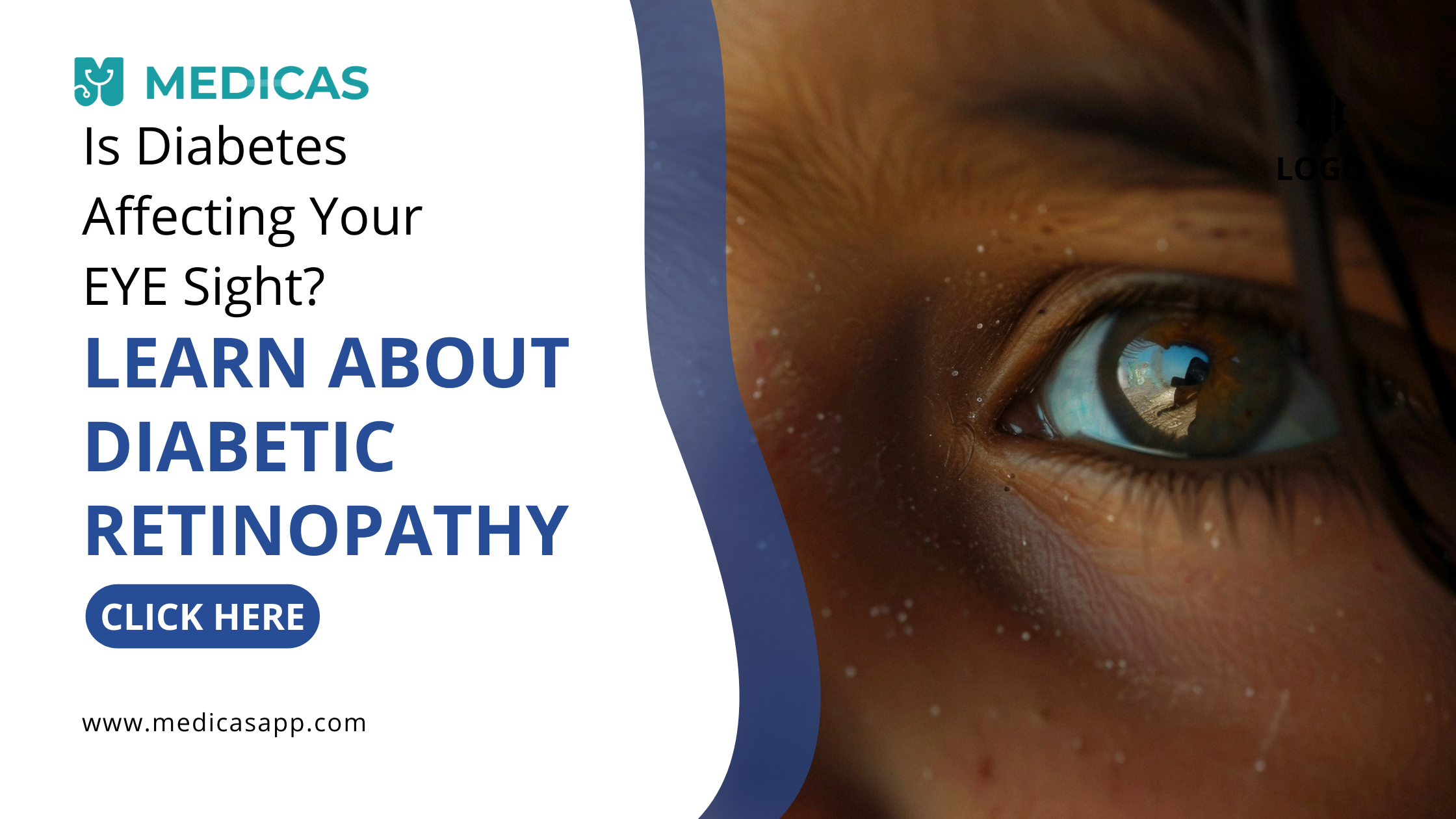Diabetic retinopathy is a serious eye condition that affects individuals with diabetes, leading to potential vision loss if not managed properly. Understanding its causes, recognizing its symptoms, and being aware of the risk factors are crucial steps in preventing and managing this condition. This article delves into the essential aspects of diabetic retinopathy to help you stay informed and proactive about your eye health.
What is Diabetic Retinopathy?
Diabetic retinopathy is a complication of diabetes that impacts the eyes. It develops when elevated blood sugar levels harm the blood vessels in the retina, the light-sensitive tissue located at the back of the eye. Over time, these damaged blood vessels can leak fluid or blood, leading to vision problems and potentially blindness if left untreated.
What are the Causes of Diabetic Retinopathy?
The primary cause of diabetic retinopathy is prolonged high blood sugar levels, which are common in individuals with diabetes. This high blood sugar can lead to the blockage of the tiny blood vessels that nourish the retina, cutting off its blood supply. As a result, the eye tries to grow new blood vessels, but these vessels do not develop properly and are prone to leaking, leading to additional damage to the retina.
Several factors contribute to the onset and progression of diabetic retinopathy:
1. Hyperglycemia (High Blood Sugar): Consistently high blood sugar levels may damage the blood vessels in the retina.
2. Duration of Diabetes: The longer you have diabetes, the greater your risk of developing diabetic retinopathy.
3. Poorly Managed Blood Sugar Levels: Inadequate control of blood sugar levels may significantly increase the risk of retinal damage.
What are the Symptoms of Diabetic Retinopathy?
In the early stages, diabetic retinopathy may not produce noticeable symptoms. However, as the condition advances, symptoms may include:
1. Blurred Vision: Difficulty seeing fine details may be one of the first signs.
2. Floaters: Small spots or dark strings floating in your vision.
3. Dark or Empty Areas in Your Vision: Missing areas in your field of vision.
4. Difficulty with Color Perception: Colors may appear faded or washed out.
5. Vision Loss: In severe cases, there may be a significant loss of vision.
It’s important to note that these symptoms may develop gradually, making regular eye examinations essential for early detection and management.
Risk factors Associated with Diabetic Retinopathy
Several factors can increase the likelihood of developing diabetic retinopathy. Recognizing these risk factors can aid in taking preventive measures:
1. Duration of Diabetes: The longer you have diabetes, the higher your risk.
2. Poor Blood Sugar Control: Consistently high blood sugar levels may increase the risk of retinal damage.
3. High Blood Pressure and Cholesterol: These conditions may exacerbate the damage to retinal blood vessels.
4. Pregnancy: Pregnancy may sometimes worsen diabetic retinopathy, especially if blood sugar levels are not well controlled.
5. Kidney Disease: Individuals with kidney disease related to diabetes are maybe at an increased risk.
What are the Complications of Diabetic Retinopathy?
Diabetic retinopathy is a serious condition that can lead to various complications affecting vision and overall eye health. Understanding these potential complications is crucial for managing the disease and preventing severe outcomes. Here are the primary complications associated with diabetic retinopathy:
- Vitreous Hemorrhage: The abnormal new blood vessels associated with diabetic retinopathy can be fragile and prone to bleeding. Bleeding into the vitreous, the clear gel-like substance that fills the center of the eye, can cause a sudden decrease in vision or even complete vision loss. While the blood often clears over time, it may damage the retina if not treated promptly.
- Retinal Detachment: Scar tissue that grows due to abnormal blood vessels can pull on the retina, causing it to detach from the back of the eye. Seek immediate medical attention to prevent permanent vision loss as this is a medical emergency.
- Neovascular Glaucoma: In some cases, the body’s attempt to compensate for blocked blood vessels in the retina can lead to the growth of new blood vessels in the iris (the colored part of the eye). This can block the drainage channels for fluid in the eye, leading to a type of glaucoma called neovascular glaucoma. This condition causes increased pressure in the eye, which may damage the optic nerve and lead to vision loss.
How to Prevent Diabetic Retinopathy
While diabetic retinopathy can be serious, it is often preventable and manageable through careful monitoring and control of diabetes. Here are some key strategies:
1. Monitor any changes in your vision carefully: If you experience any sudden vision changes, consider a best online doctor consultation for an initial assessment.
2. Control Blood Sugar Levels: Keeping blood sugar levels within target ranges can prevent or slow the progression of retinopathy.
3. Manage Blood Pressure and Cholesterol: Keeping these under control can reduce the strain on your blood vessels, including those in your eyes.
4. Healthy Lifestyle: Maintaining a healthy diet, exercising regularly, and avoiding smoking can all contribute to overall eye health.
Conclusion
Diabetic retinopathy is a serious but manageable complication of diabetes. By understanding its causes, recognizing its symptoms, and being aware of the risk factors, you can take proactive steps to protect your vision. Regular eye examinations, proper diabetes management, and a healthy lifestyle are your best defenses against this potentially blinding condition. Remember, early detection and treatment are key to maintaining good eye health and preventing vision loss.
Other Healthcare Blogs:
Can Type 2 Diabetes Turn Into Type 1? Exploring the Complexities of Diabetes Transitions
Understanding Type 4 Diabetes: Symptoms and Effective Prevention Strategies
Effective Strategies for Managing Swollen Feet Due to Diabetes
Exploring the Link Between Moldy Toilets and Diabetes: Fact or Fiction?
Is Diabetes Contagious? Debunk the Myth
Understanding the Link Between Diabetes and Dry Eyes
Personalized Dietary Counseling for Diabetes
The Role of Nutrition in Diabetes Management
Understanding Diabetes: Causes, Types, and Risk Factors
A Comprehensive Guide on Caring for Diabetic Ulcers and Sores in the Mouth
Normal Blood Sugar Levels Chart By Age: Understanding Optimal Health
“Humalog vs Novolog”, for Effective Blood Sugar Control, A Comprehensive Comparison
Busting the Myth: Sweet Corn’s Surprising Impact on Blood Sugar
Disclaimer:
Medical Advice: The information provided in this blog post is for educational purposes only and should not be considered as a substitute for professional medical advice, diagnosis, or treatment. Always consult with a qualified healthcare professional for personalized guidance regarding your specific medical condition.
Accuracy of Information: While we strive to provide accurate and up-to-date information, the field of medicine and viral fevers is constantly evolving. The content in this blog post may not reflect the most current research or medical guidelines. Therefore, it is advisable to cross-check any information provided with reliable sources or consult a healthcare professional.
Individual Variations: The symptoms, causes, treatment options, and preventive measures discussed in this blog post are general in nature and may not apply to everyone. It is important to remember that each individual’s situation is unique, and personalized medical advice should be sought when making healthcare decisions.
External Links: This blog post may contain links to external websites or resources for additional information. However, we do not endorse or have control over the content of these third-party websites. Accessing these links is done at your own risk, and we are not responsible for any consequences or damages that may arise from visiting these external sources.
Results May Vary: The effectiveness of treatment options or preventive measures mentioned in this blog post may vary from person to person. What works for one individual may not work the same way for another. It is essential to consult with a healthcare professional for personalized advice tailored to your specific needs.

Dr. Murali serves as the Chief Medical Officer at EGS Health, bringing over 18 years of experience as a general practitioner to his role. He also directs Special Projects & Development at the Central America Health Sciences University, Belize Medical College. Dr. Murali holds an MD and a PG Cert in Health Profession Education (HPE) and has been an active contributor to the medical field since 2001. His career began in the Tobacco Cessation Program and the Border Family Welfare Programs in conjunction with PAHO in Ciudad Juarez, where he also published research on the impact of technology on healthcare education. He later became a clinical coordinator for clerkships, forging partnerships between students and hospitals that now serve as clinical sites for the university. Dr. Murali has furthered his expertise through advanced training, including the Leaders in Healthcare Education course at Harvard Macy Institute and the Health Professions Certification Program at Keele University, enhancing his influence in both medical education and healthcare delivery, both locally and internationally.


